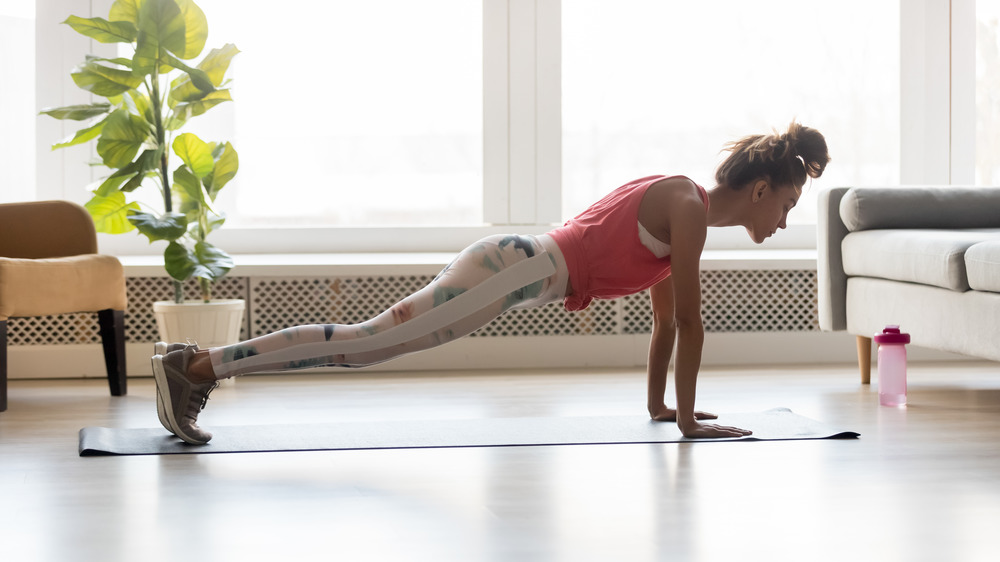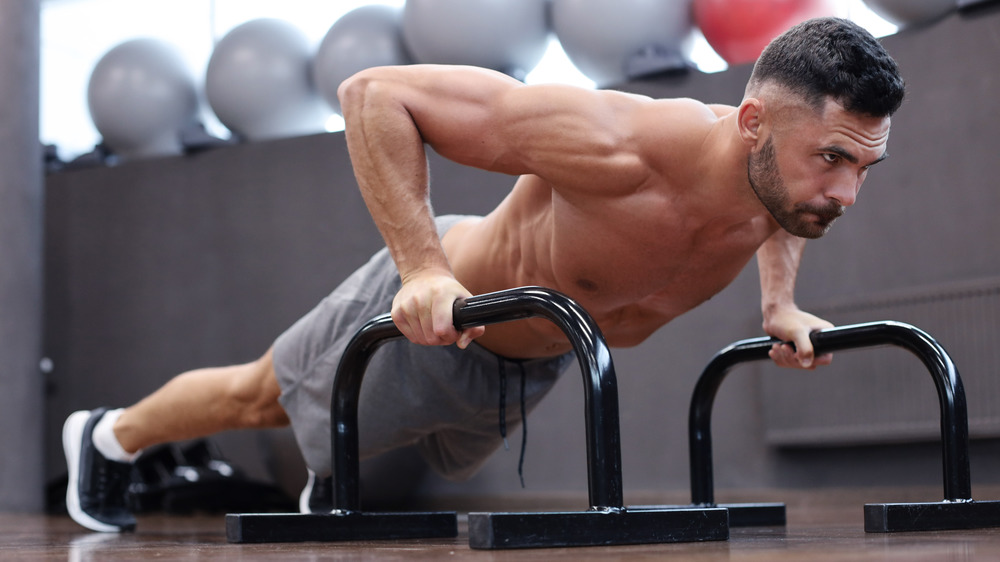What You Need To Do If Push-Ups Hurt Your Wrists
If doing a set of push-ups leaves your wrists more sore than your core, it may be time to tweak your form, dial back your training regimen, or work on your wrist mobility. "Wrist pain and discomfort during [a workout] is likely due to improper wrist positioning, overloading weak structures, or overuse," physical therapist Paul Mostoff told Health. You can tackle all three of these issues with some minor changes to how you approach your push-ups.
Start with dialing in your push-up position: Hands should be directly under your shoulders and positioned so your fingers are pointing straight ahead, your body should be in one straight line from head to heel, and your core should be engaged (via Breaking Muscle). As you lower, your body should remain in this straight line, and your elbows should move backwards and stay tight to your torso rather than winging out.
Another trick to alleviate pressure on your wrists is to focus on your fingertips, trainer Dave Hedges told Onnit Labs. Rather than pressing just into the palms of your hands as you do your push-up, try to distribute your weight more evenly into your fingertips.
If your wrists still hurt doing push-ups, try these strategies instead
If doing push-ups is new to your exercise routine, your wrists may be hurting because you've started with too much, too soon (via Health). Dial back your push-up frequency, focusing on proper form and quality over total repetitions. You can also try doing some of your push-ups using parallel bars or holding dumbbells to avoid the deep bend in your wrist (via Daily Burn). If you don't have access to gym equipment, elevate your push-up by placing your hands on a chair or sofa to alleviate some of the pressure and reduce the bend needed in your wrist, or try making fists and doing the push-ups with your knuckles on the floor.
You can also aim to improve wrist mobility. If wrist pain persists during push-ups, start by stretching your wrists, says Men's Health Fitness Director BJ Gaddour. He recommends starting on your hands and knees, reversing your normal push-up palm position so that your fingertips are pointed backwards towards your kneecaps. Gently rock forward to get a deep stretch in your wrists. Do this before you start your push-ups, and you may find that the stretch decreases your pain by increasing your flexibility.


